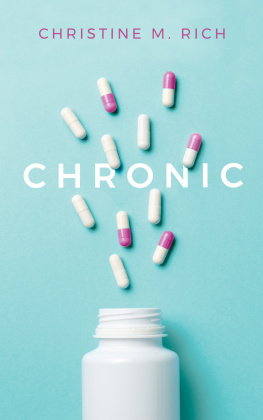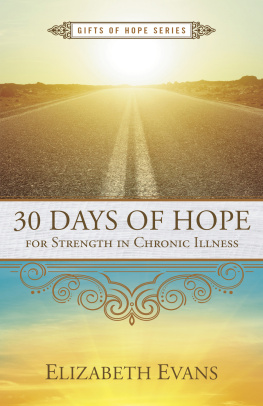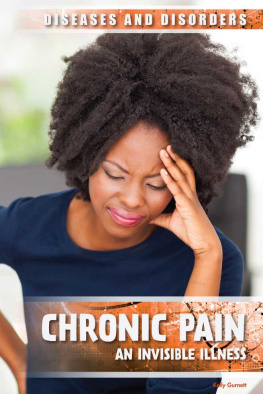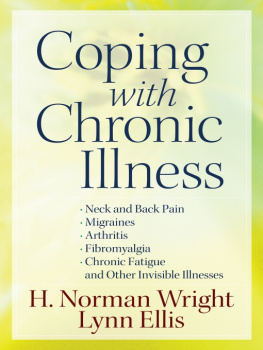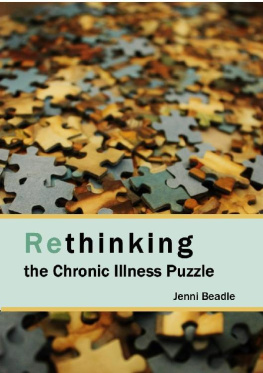Christine M. Rich
For my best friend and greatest teacher, Joe. Twenty years later you still make me swoon.
For my sweet little fairies, Stella and Roma. I am in awe of you both every single day.
And for the 80 percent ... you will never be invisible to me.
And I said to my body softly, I want to be your friend. It took a long breath and replied, I have been waiting my whole life for this.
Note from the Author
As a child, I always loved reading and knew one day I wanted to write a book. Initially, I thought I should write about women in leadershipa project I hoped would inspire other women and look impressive on my resume.
This is not that bookbecause a different story kept calling to me, try as I might to ignore it.
My own.
This is the book I needed to write, even though I felt terrified to share such personal details in printthat people might actually read. For years I carried a secret. Despite how confident and together I looked on the outside, on the inside, I often felt afraid and angry as I struggled to accept what it meant to live with an invisible disease. One that no amount of perceived togetherness would cure.
The word chronic is often associated with long-term, negative things like illness and pain. (Although, Ive often wondered why we dont use the term to describe positive things like love and wellness.) Autoimmune diseases typically fall into the negative-chronic category.
According to the National Institutes of Health, autoimmune disease is a condition in which the immune system mistakenly attacks the body, creating inflammation and disease. There are an estimated one hundred different types, and roughly 80 percent of people with an autoimmune disease in the US are women. I am one of those women with one of those autoimmune diseases called Crohnsand this is my story.
Chronic is the book I wish would have existed when I was a teenager, struggling to process and accept my diagnosis, and later as a young wife, mother, and professional with a chronic illness. For years, I did not understand the emotional impact the term chronic had on me; and I carried so much guilt for feeling anything other than grateful. I thought my disease was something I could simply run away from, sweep under the rug, fight against, or achieve my way out of.
Spoiler alert: none of those things worked. By pushing against my body and all of the emotional and mental struggles that accompany living with Crohns disease, I was denying and fighting against myself and, most importantly, my spirit. Which was no way to live the wholehearted life I wanted.
Crohns disease can be a tough one, especially for women living in a society that expects them to be pretty, neat, and appeasing at all times. Ladylike is a term I heard a lot growing up. Guess what is not particularly ladylike? Pretty much all the main symptoms of Crohns disease! After all, women arent supposed to be gassy, have diarrhea, or shit themselves in the middle of the workday. And heaven forbid we actually talk about such things out loud! Were also not supposed to be too emotional (especially not angry) or too demanding about what we need.
Many of us were taught to smile, be grateful, and make everyone else feel all comfy cozy at the expense of our own comfort and well-being. The problem with these types of expectations is that they are lies that create shame, loneliness, and rage that eventually turn women against themselves and their potential. In my experience, these lies lead to one of two places: an eventual brick wall we run straight into, going one hundred miles per hour, or worse, a nagging feeling we are meant for more but are too afraid to show up for fear of being truly seen.
Like anyone else, I made mistakes and decisions of which Im not proud. I made an enemy of my body and took it for granted for years. I refused to listen to or trust myself, even when a small voice inside was begging me to. And I lived in a perpetual state of fight-or-flight until I learned another way.
It wasnt until my body waved the white flag and started shutting down that I realized I had to make a decision: I could continue on the path of denial and destruction, or I could learn to accept, love, and listen to my body in order to become the woman I was meant to be. The good news is, as Glinda said in The Wizard of Oz, I had the power all along. And so do you.
My hope for this book is to help other women who are living with any kind of chronic condition feel less alone and more validated. I want to create a space for you, the reader, to reflect on everything youve been through. The good, the bad, the embarrassing, whatever. Thats why Ive included journal prompts at the end of each section in this book. I hope you will take the time to write and reflect as you discover new things about yourself and your experiences.
I also hope that this book serves as a tool to help all women feel empowered to grieve, feel, ask for help, tell the truth, and advocate for and take care of their bodies and spirits. This is not a story about overcoming a monster or slaying a dragon because that would only result in fighting against ourselves. (And something tells me if youre reading this book and have a chronic issue, youve done enough of that already.) This is a story about befriending ourselvesespecially the parts that scare us or are what others might consider broken or different.
As it turns out, I not only needed to write this book for myself, but also for other women who might be struggling. There is power in sharing our stories, however messy, raw, and un-resume-worthy they might be. Ultimately, this is a book for anyone who has ever struggled with self-acceptance in whatever form that may take. For me, it is Crohns diseasefor you, it might be a different autoimmune disease, addiction, or a physical disability. Heres what I know for surewe all carry something, and my hope is this book will help lighten your load just a little.
Chronically yours,
Christine
Chapter 1
Dresses
Ever since I was a little girl, I have always loved dresses. Theyre quick and easy, and I always feel pulled together andlets face itnoticed in a dress.
My penchant for dress-wearing started young. There was the empire-waist Cabbage Patch number I wore to my fifth birthday party. The red fit-and-flare dress my aunt bought me when I was nine that floated around me when I spun, just like Penny in Dirty Dancing. There were the obvious ones like the head-to-toe teal sequins gown I wore to prom my junior year (with dyed matching shoes, thank you very much!) and, of course, my wedding dress.
What I realized from a relatively young age is that a dress can be a pretty slick veneera costume, a way to present oneself to the world as the kind of girl who is sweet and cute or the kind of woman who is confident and put together.
Just like those women who look like they just stepped out of InStyle magazine on early-morning flights. Who are these fancy airport women? How did they manage to pull off hair, makeup, and all that chicness for a 6 a.m. flight? As a kid, I would secretly admire these types of women and dreamed of the day when I too could be a fancy airport woman. And then I became one and realized it wasnt all that fancy.
After all, theres nothing fancy about living in a constant state of fear, anger, and denial. And dress or no dress, there is certainly nothing fancy about losing control of ones bodily functions in the middle of a workday.
Or maybe there isif such moments serve as wake-up calls.
One such moment involved a little black dress (LBD) with just the right amount of stretch and perfectly placed pockets. An LBD with stretch

